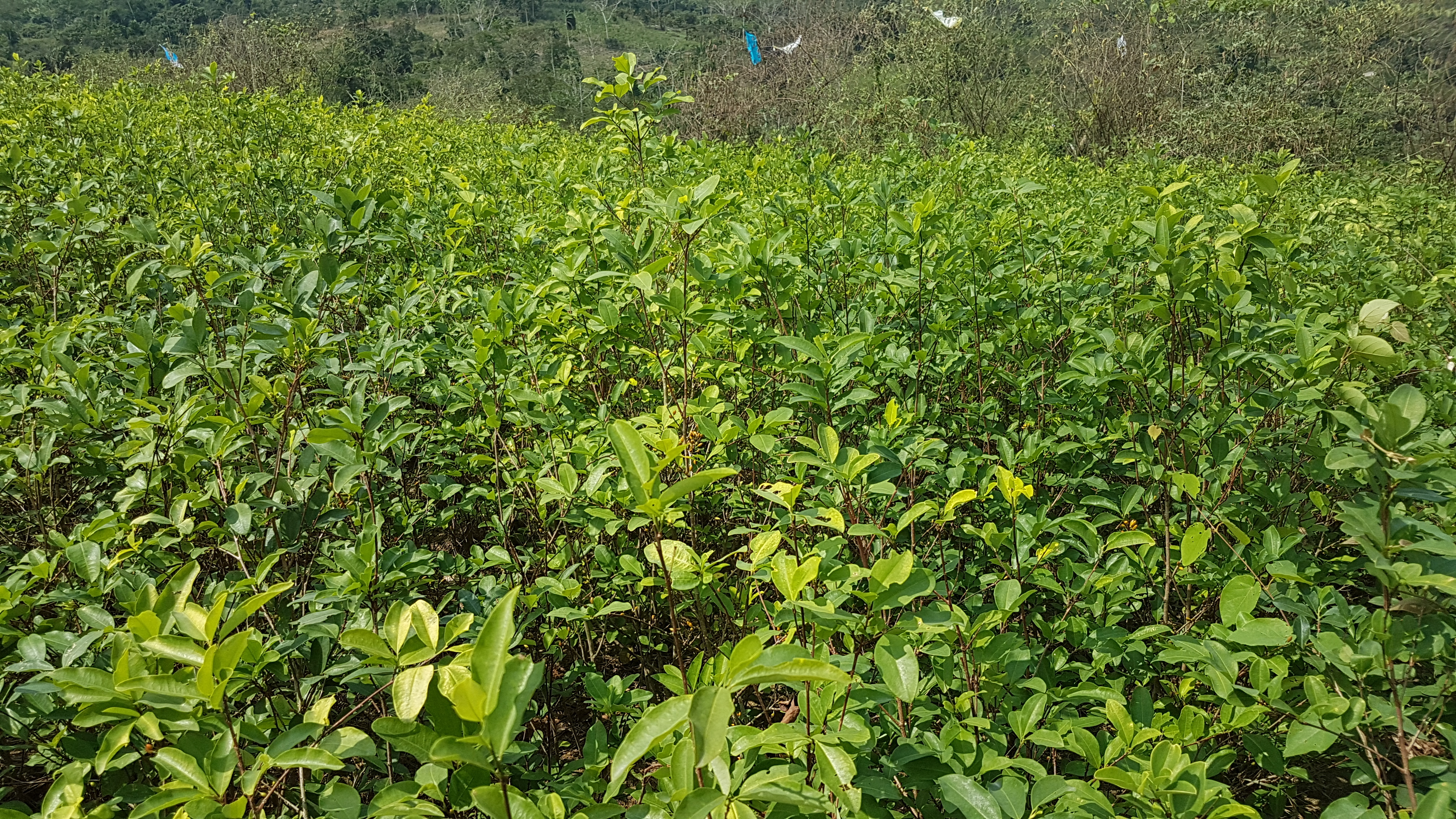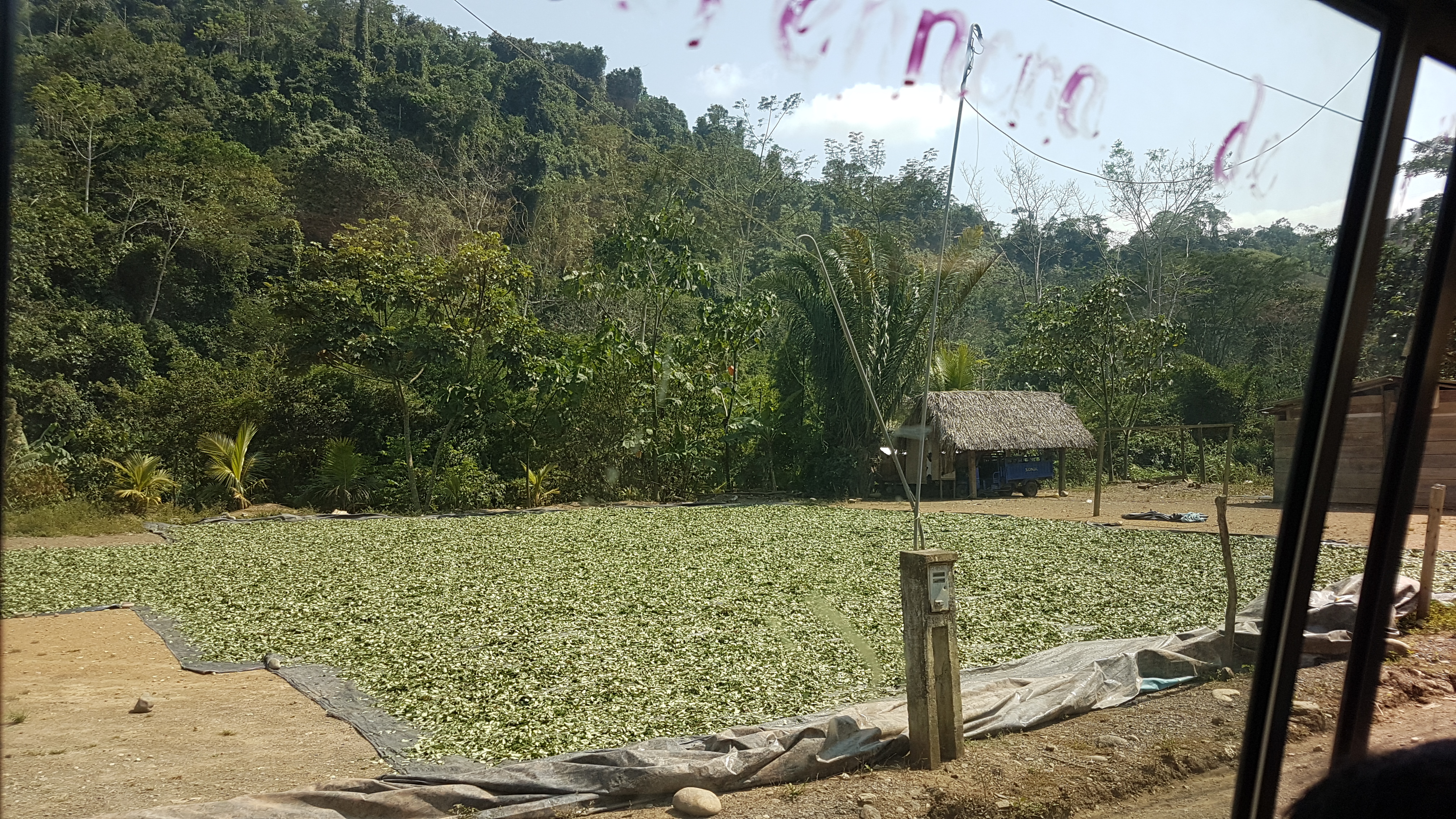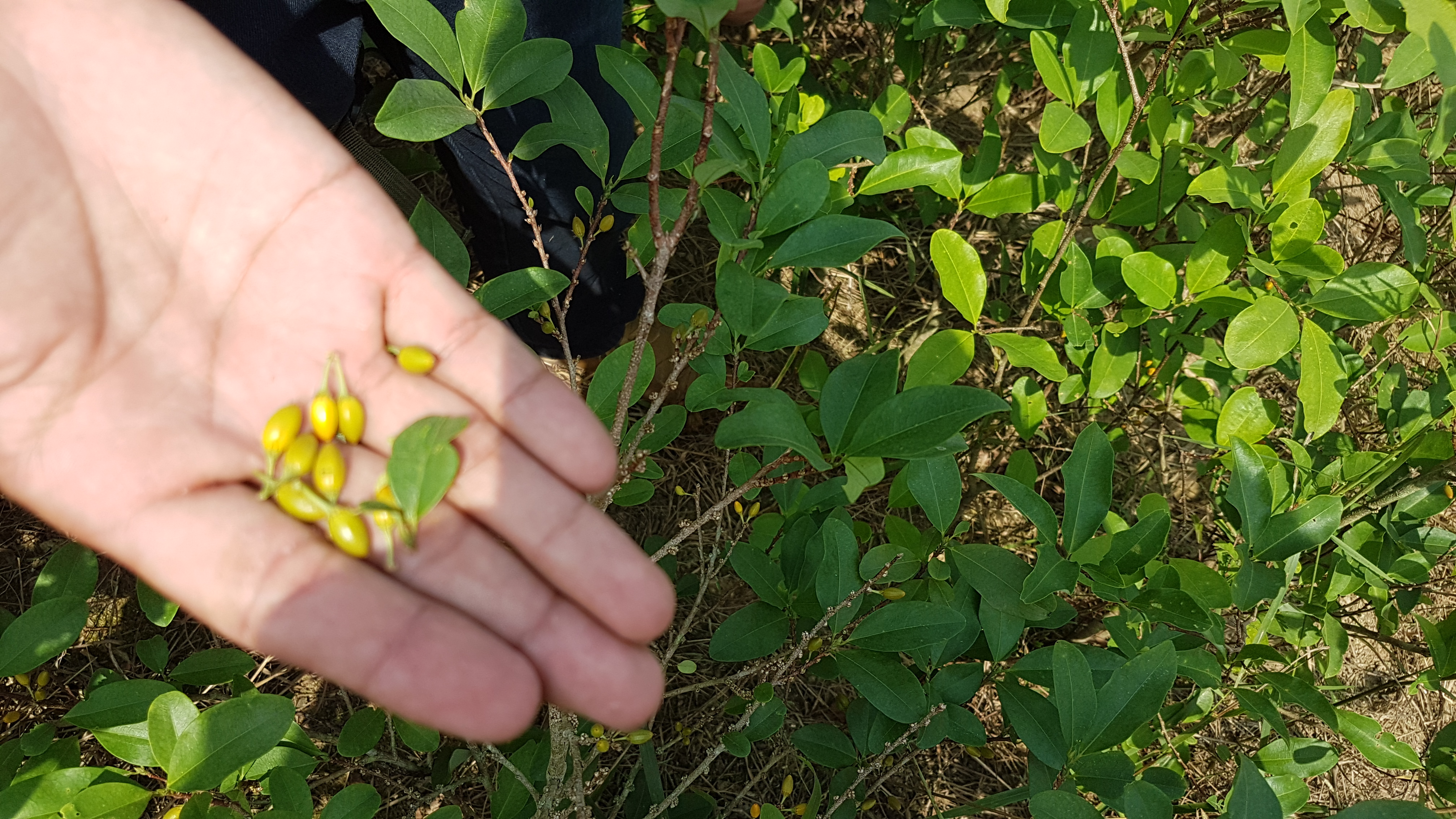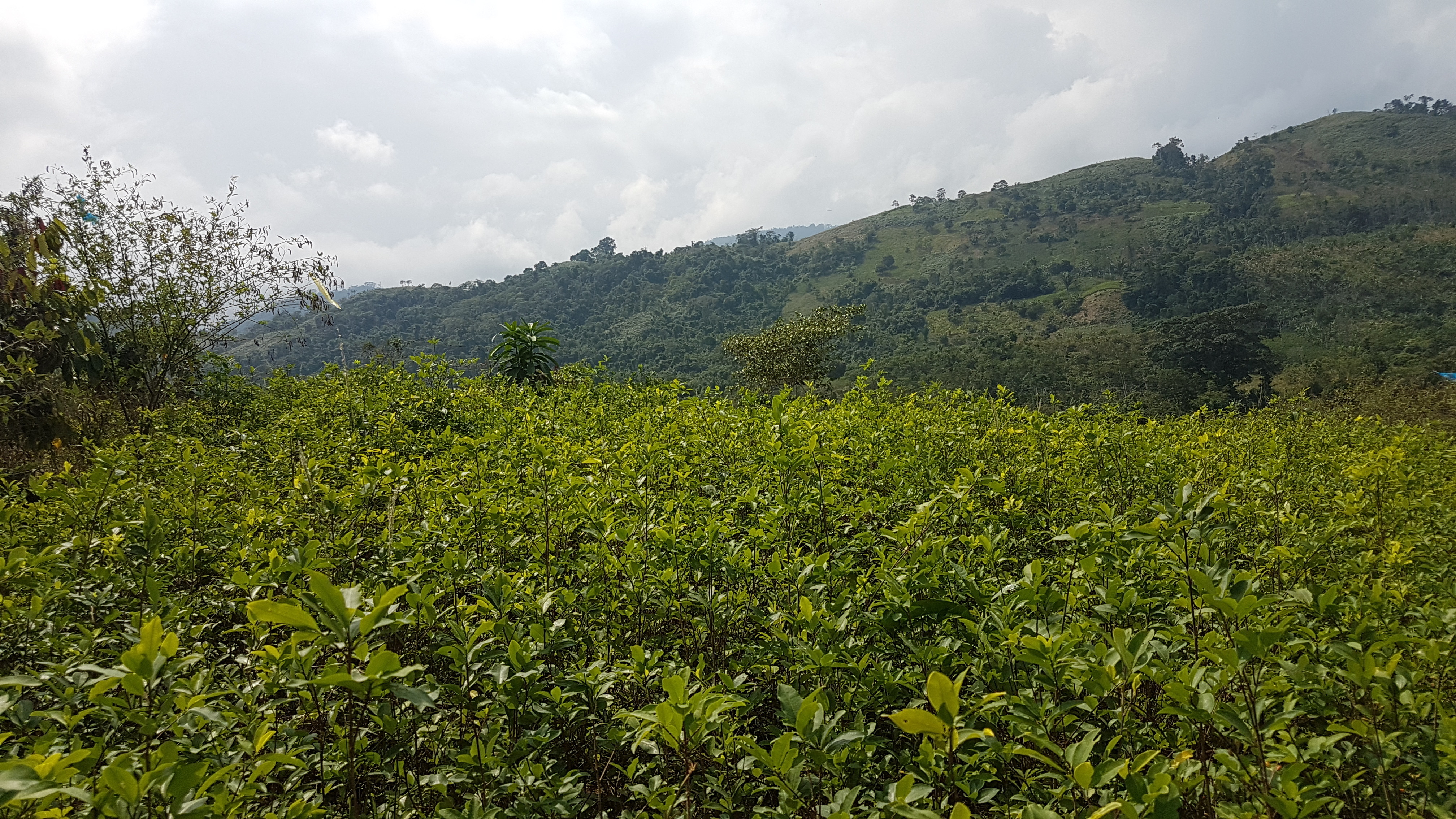Out of all the plants in South America, none are more infamous than coca. Despite being illegal in most countries, the legacy of this plant continues to echo throughout the world. Boasting over 14 helpful minerals and alkaloids, coca is undoubtedly one of the most misunderstood plants in the world. Unfortunately, recently cocaine has stolen the show by embodying the repercussions of human greed. While coca leaves are actually extremely good for you, their isolated alkaloid cocaine is only used for medical uses and partying. Despite being one of the most celebrated and useful plants in the world, the international popularity of its narcotic derivative has made coca plants public enemy number one.
Despite the authority’s fiercest efforts to eradicate this beloved crop, coca fields remain abundant in Peru, Colombia, and Bolivia. This local adoration for the plant stems from thousands of years of strong cultural ties and modern corruption. Billions of dollars have been spent trying to eliminate coca, but today cultivation is higher than when it was legal. This ironic trend is directly fueled by the fierce competition and massive profit margins created by the war on drugs. To truly understand why this plant is so hard to eradicate, it’s essential to look at its history. In this article, we will cover coca leaves essential role in per-Columbian cultures and its initial celebration in Europe, along with the introduction of cocaine and its effect on modern society. It’s an incredibly startling view of human nature, so prepare to be educated with this article!
The Illustrious History of Coca-Leaves
Hints of coca consumption have been traced back 8,000 years in Peru, which predates the Incan empire. Adored by multiple pre-Columbian cultures for its stimulant effects, coca leaves were hailed as a gift from the gods. During the Incan empire, coca cultivation was so essential that it was controlled and protected by the state. Their alkaloids played a crucial role in the construction of many of the sacred sights adored by tourists today, including Sacsayhuaman and Machu Picchu.
When the Spaniards conquered the Incas, even they were forced to recognize the power of the coca leaf. While at first they were vehemently against this “demonic” religious practice revolving around the sacred leaves, they couldn’t deny its usefulness. Philip II of Spain even issued a decree recognizing coca leaves as being essential for the well-being of the Andean people. Realizing that these leaves increased labor output and tolerance to starvation, the Spaniards encouraged its use amongst natives. By establishing a 10% tax on coca, they were able to cash in on this native ritual. This rare agreement between the two cultures promoted coca production and bolstered the already strong roots of coca in South America.
While coca was first introduced to Europe in the 16th century, it didn’t become popular until the middle of the 19th century. This awakening to the vast health benefits of coca leaves was fueled by a publication written by Dr. Paolo Mantegazza. Once Europeans realized its potential, the floodgates were opened to coca-based products. From coca wine to multiple tinctures, coca products were hailed as the future of cognition stimulation. In 1855, everything came to a head when German chemist Friedrich Gaedcke isolated the cocaine alkaloid and named it “erythroxyline”. When his findings were published, they piqued the curiosity of the medical community.
Creation of Cocaine & Unintended Consequences
Realizing the medical potential of this innovative discovery, the medical community focused on improving the biosynthesis of cocaine. Due to the long time it took to ship coca leaves from Peru, many of the alkaloids degraded during the journey. Combined with the relatively archaic extraction methods of the time, this made cocaine synthesis a daunting task. Nevertheless, the methods were eventually perfected to the point where cocaine was able to be studied more in-depth.
When Albert Niemann described the cocaine isolation process in his dissertation, he was awarded a Ph.D. and had his work published in the British Library. After noticing the anesthetic properties while trying it on his tongue, Niemann named the alkaloid “cocaine”. “Coca” comes from the Quechua origin word for the leaves and “caine” stands for its anesthetic properties. From there multiple scientists perfected the extraction methods, which produced an ample supply of cocaine in Europe.
Oblivious to the obvious differences between coca leaves and cocaine, doctors assumed that the two substances were both healthy. This led to cocaine being fully embraced by both the medical community and the public. Cocaine was included in Vin Mariani wine at 7.2 mg per ounce, as well as in Coca-Cola. On top of being introduced as a local anesthetic in Germany, cocaine was advertised as a useful way to treat morphine addiction. Celebrated by Sigmund Freud and multiple academics, cocaine’s popularity soared. By the late Victorian era, cocaine use was so popular that it was even included in literature. Conan Doyle’s renowned Sherlock Holmes character even casually injected cocaine to fight off boredom in between criminal cases.
This outrageously normal use of cocaine quickly spread to North America. By 1885, the leading U.S. drug manufacturer Parke-Davis offered multiple forms of cocaine. Laced cigarettes, powder, and injectable mixtures that came with a needle attached to the box were advertised as a cure-all for nearly every imaginable ailment. They even promised that cocaine-related products “supply the place of food, make the coward brave, the silent eloquent and render the sufferer insensitive to pain”.
This well-intended positive hysteria led to cocaine being sold in drugstores throughout the South. Costing just 5 to 10 cents for a small boxful, cocaine was something every American could afford. White employers even encouraged black laborers to use it to increase work output. Cocaine-filled capsules were marketed as pep pills that made users “feel rich and beautiful”. It wasn’t until the Pure Food and Drug Act was introduced in 1906 that cocaine had to be labeled on products. From there, a regulatory and licensing regime was set up by the Harrison Narcotics Tax Act of 1914.
When cocaine was made illegal in 1961 by the International Single Convention on Narcotics Drugs, its popularity was only temporarily affected. By the 1970s, cocaine use amongst wealthy elite in America steadily increased until it reached its heyday in the 1980s. While public opinion of the drug changed with the introduction of crack cocaine, consumption remained high. In 2005 it was estimated that cocaine sales generated $77 billion, which is more than the revenue of Starbucks. Today cocaine is the second most popular illegal drug in the world, beaten only by cannabis. Between 14 to 21 million people use the drug every year, and 1 to 3% of people in the developed world admit to having used it at least once in their lifetime.
While the adverse health effects of cocaine aren’t a secret, eradicating this illicit trade has proved to be impossible. Aside from the billions of dollars cocaine generates that corrupts military officials, police, customs officers, and politicians throughout Latin America, the logistics of eliminating coca leaves are even more daunting. While cocaine was originally cultivated in Ecuador, Chile, Argentina, Peru, Colombia, & Bolivia, its prohibition has caused the logistics to change. While illicit coca production has been recently discovered in Mexico, the main producers of coca leaves are Colombia, Peru & Bolivia. This coca-growing corridor spreads up the Andes Mountains. On top of being an area too large to patrol, coca leaf-producing areas are extremely remote. Their rugged terrain makes coca fields impossible to traverse, and they can be quickly replanted after eradication.
Even aerial spraying techniques used by the United States in Colombia have proved to be ineffective. This is due to the fact that there are over 489 sub-species of coca, and one is resistant to pesticides. Named “supercoca”, “la millionaria” and “Boliviana negra”, this species is resistant to glyphosate herbicides. Glyphosate is the main ingredient used in America’s Plan Colombia, a multibillion-dollar aerial coca eradication campaign perpetuated by Monsanto. Ironically, spraying Boliviana negra with pesticides actually makes it grow faster since it kills off neighboring weeds.
The impressive resilience of coca plants against enforcement, eradication, and poison showcases the futility of outlawing a plant. Nature will always find a way to survive, especially when it’s being planted and protected by organizations that make billions of dollars in profit off it. Thanks to the competitive nature created by the war on drugs, the potency of coca leaves has also risen. While the cocaine alkaloid content of coca leaves used to be relatively low at 0.25%, new strains have reached 0.77%. This allows traffickers to produce more cocaine with fewer leaves, which is even more disastrous for enforcement.
Moving forward as a society, it’s impossible to continue the same destructive methods that have yielded no positive results in the past. In 2017, over 1,632,921 people were arrested for drug offenses in America alone. Instead of crippling narcotics operations, they didn’t miss a beat. Today Colombia and Peru are producing more cocaine than they did in the days of Pablo Escobar. Fueled by $435 billion annually, drug-related violence is at an all-time high. The 29,000 murders in Mexico during 2017 were a new record, but homicides are already up by 16% in 2018. Cocaine production fuels Colombia’s guerilla wars, which killed 260,000 and displaced 5 million from their homes.
As this never-ending wave of mass incarceration and murder sweeps across the world, we have to ask ourselves if it’s worth it. Despite all this destruction, drug use is higher than before the drug war was introduced. This undeniably epic failure means that trying the same heavy-handed methods and expecting different results is the definition of insanity. Until drugs are decriminalized, controlled by corporations, and taxed heavily to provide services to consumers who become addicts, illicit drug production will continue to thrive. This isn’t a problem that can be solved by arresting or killing, it’s a shift in consciousness that needs to be made through legalization for the benefit of humanity. While we don’t advocate cocaine on supermarket shelves next to alcohol, there has to be a better method than what’s currently drenching the world in blood and misery.



